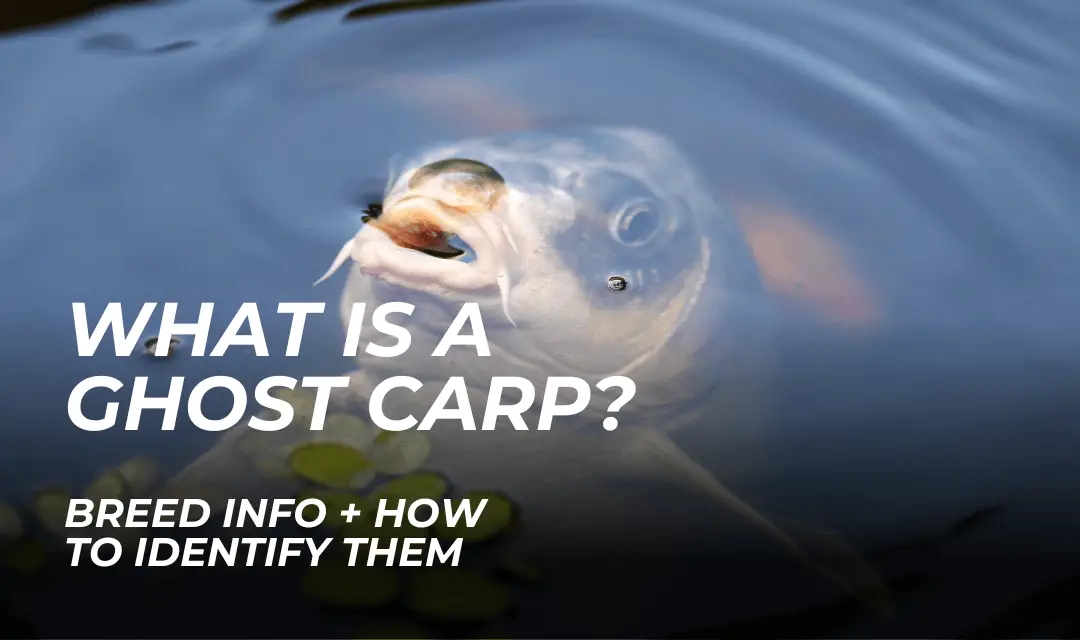What breaking strain line for carp fishing? – A common and very important question for anyone new to the sport.
If you’ve been fishing for smaller species before, you’ll no doubt know that you will need a stronger mainline for carp fishing. Carp are incredibly powerful fish, capable of long, hard battles under the rod tips. For this reason, you need a mainline that can withstand the fight and enable you to get that elusive carp on the bank.
However, it’s not as simple as just going for the strongest mainline that you can get away with. There are a few other considerations that come into play. For example, you’ll need to take into account your style of angling, casting distance and snags.
Throughout this article, we’ll give you a full overview of how to choose what lb line for carp fishing.
What breaking strain line for carp fishing quick reference guide
Use this guide to quickly help you choose the right carp mainline for you. For the purpose of this quick reference guide, we are choosing two weight categories;
- 10lb-30lb carp, typical of what you will find in most day ticket lakes in the UK
- 30lb + carp, including the biggest in the UK and overseas
| Carp Size | Open Water, No Snags | Fishing In & Around Weed | Fishing Close to Snags | Fishing Close to Snags at Distance |
|---|---|---|---|---|
| 10lb – 30lb | 12lb | 15lb | 15lb | 15lb + Abrasion Resistant Shock Leader |
| 30lb+ | 15lb | 15lb | 18lb | 18lb + Abrasion Resistant Shock Leader |
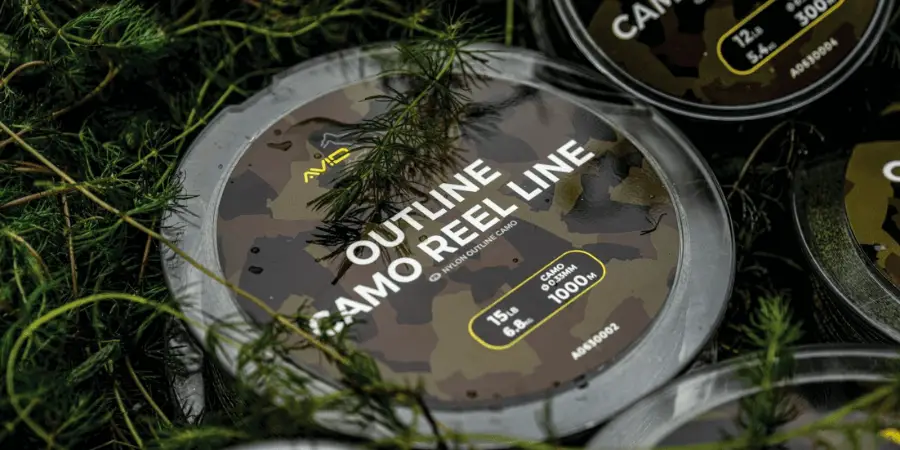
Breaking strains depending on your fishing scenario
As we’ve previously mentioned, what lb line for carp fishing depends on a number of factors. One of those is the type of fishing you’re doing. Here are some scenarios and things to think about when choosing the breaking strain of your mainline.
Fishing on the bottom
The most typical carp fishing scenario where you will be fishing on the bottom for carp. in this instance, a breaking strain mainline of anywhere from 12lb – 18lb will suffice.
The main thing to consider in this scenario is proximity to weed and snags. For instance, you may be fishing close to lily pads or branches hanging out from the margins. In this case, it’s always worth going for the strongest lb line you can get away with.
It simply is not worth risking the life of a carp for the sake of using a thinner mainline. If this is to affect your ability to cast to that position in the first place, then you should simply fish somewhere more accessible.
Surface fishing breaking strain
Surface fishing for carp is one of them times when you really do need to consider the visibility of your line. As carp are approaching your hookbait from below, your mainline is often well within their eyeline.
For that reason, where possible it’s advised to use a discreet mainline, whilst being sure that whatever you hook, you can successfully land.
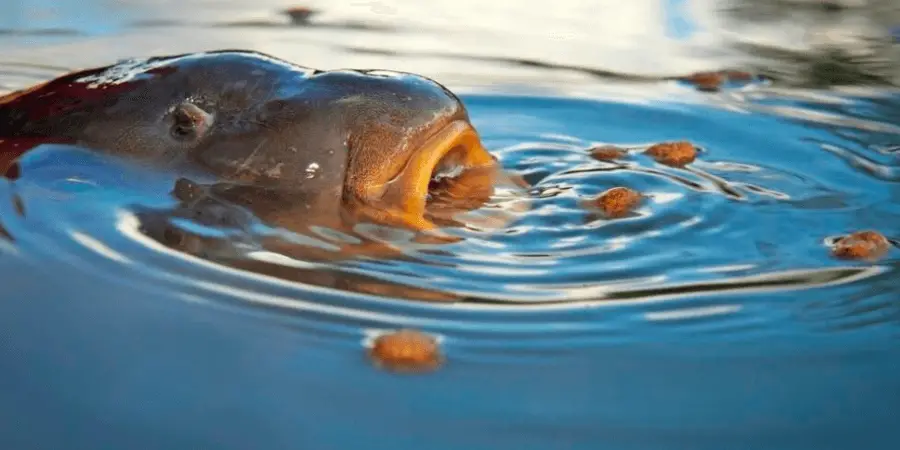
Most of the larger tackle brands on the market sell specialist surface fishing mainline too. The key difference being that line designed specifically for surface fishing can float. As a result, your line stays above the surface and out of the way of any passing carp.
If possible, always try to use a separate rod/reel for surface fishing in the summer so that you already have surface fishing line spooled up and ready to go.
In terms of what breaking strain line for carp fishing on the surface, 12lb – 15lb should be fine for this style of fishing. Furthermore, this style of angling is often relatively close in so there isn’t much strain on the lead from trying to cast far out.
Casting distance and it’s affect on your line choice
Casting distance will have a large impact on the breaking strain line that you choose. Typically, when fishing at range, you want to go for the lowest diameter line you can get away with.
The lower the diameter, the less weight and resistance there will be as the lead/rig/line flies through the air. However, it’s important to note the term ‘lowest diameter line you can get away with’.
It’s fine to use 12lb line for your long range casting, but what if you’re casting to a snaggy area of the lake? In this instance, the chances of you landing any fish you hook at that range are slim. So, as you can see, there’s no one size fits all.
Choosing the right mainline is all about reading the situation in front of you. Most importantly, take fish care into account and make sure that you can successfully land any fish you hook.
Should you use a shockleader attached to your mainline?
Even if you try to use a lower diameter or breaking strain line for your distance casting, you’ve also got to take into account the weight of your lead.
Trying to hit the horizon with a 4oz-5oz lead will put an unbelievable amount of pressure on your mainline. Crack-offs are common when people try to cast at range without the tackle capable of doing so.
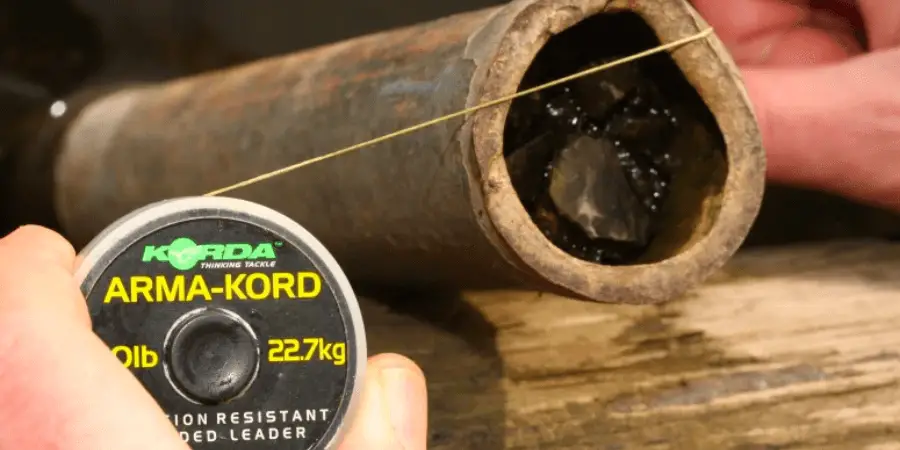
Personally, I don’t ever feel safe putting my full power into a cast when using monofilament straight through. Not only does the mono take a beating on the knots, but it also stretches a lot. As a result, it becomes much harder to fully compress your rod and launch the lead into the distance.
Additionally, cracking off with someone fishing opposite you can be extremely dangerous. just imagine a 4oz lead smacking you in the head!
MORE READING: What is a leader in carp fishing?
Using a shockleader is a safe bet
A safe bet when trying to cast a lead into the distance is to use a shockleader attached to your mainline. A shockleader is essentially a length of higher breaking strain material (typically break) which is used to take the force of the cast. This will help in two ways:
- You won’t have to drastically increase the breaking strain or diameter if your line for distance casting
- You’ll be able to compress your rod better and therefore use all of it’s casting potential
Additionally, a shockleader will also offer you more abrasion resistance behind your rig. On many occasion a shock leader has helped me when steering carp away from sharp reeds or thick lily pads. Where your typical mainline monofilament can easily cut on reeds, braided shockleaders can take the brunt of it.
I would have no problems hitting the distance with a 50lb Korda Armakord Shockleader and 12lb or 15lb Daiwa Sensor. (You can check that out here on our Daiwa Sensor Line Review).
Where to find the lowest diameter carp line?
We’ve spoken a lot about the diameter of carp line in this article. The funny thing is, just because a line is thinner, doesn’t mean that it is weaker.
All of the carp mainlines on the market are different, and you will often find thinner monofilaments at higher breaking strains.
If you would like to see a full list of the main monofilaments on the market, along with their diameter and break strain, head over to The Tackle Box. Every few years, the Tackle Box team test the leading carp mainlines to see if they stand up to their registered breaking strains.
Conclusion
Having read this article, I’m sure that it’s clear that there is no one-size-fits-all when it comes to choosing a mainline for carp fishing.
In every angling situation, you need to read what’s in front of you and how you are going to approach it. Is it snaggy? Are you having to cast long distances or will you be fishing simply in open water? – Consider all of these things before choosing the right breaking strain for your carp fishing. Just remember to have a few options available to use.
About the writer

Rob W
I’m Rob, Carp Squad’s main contributor. I’ve been carp fishing on and off for 15 years, but the bug is well and truly back at the moment. Hopefully the articles I write on here help you put more carp on the bank.

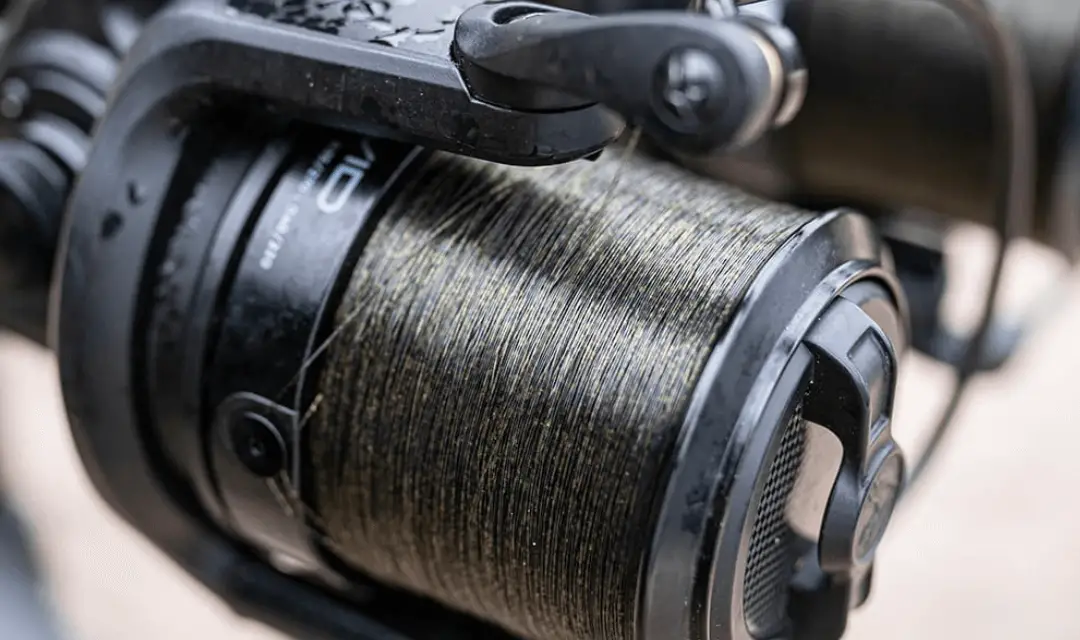
![Stocks Lake Norton Disney [Tips & Tactics]](https://carpsquad.com/wp-content/uploads/2023/11/stocks-lake-norton-disney-2-1.png)

